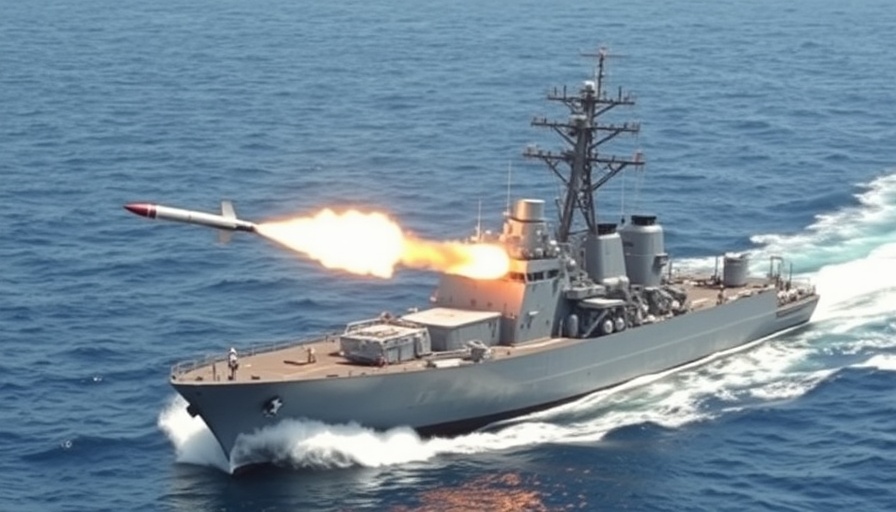
The Rise of Unmanned Surface Vessels: What Does MASC Mean for Naval Warfare?
The U.S. Navy's unveiling of the Modular Attack Surface Craft (MASC) program marks a significant shift in naval strategy, particularly as global threats continue to evolve. According to a recent solicitation, the Navy seeks to develop unmanned surface vessels (USVs) capable of carrying substantial missile payloads across vast distances. This initiative aims to enhance the Navy’s operational capabilities amid ongoing challenges in shipbuilding and modernization.
Understanding the Modular Approach
MASC’s focus on modular design stems from the complexity and varied demands of modern warfare. The planned USVs will be able to accommodate a variety of “containerized payloads,” much like the current anti-ballistic missile system, thereby adding versatility to naval operations. With a potential capacity equivalent to more than four 40-foot containers, these vessels will not only enhance offensive capabilities but also ensure that the Navy can respond dynamically to threats on the high seas.
Challenges and Solutions in Modern Shipbuilding
As the Navy continues to grapple with significant shipbuilding and repair challenges, investing in USVs could alleviate some of these burdens. Unmanned vessels are appealing due to their potentially lower costs, faster construction times, and ease of repair. With many naval shipyards operating plants that are over a century old, modernizing these facilities is crucial. The integration of advanced technologies, like 3-D printing for ship components, aims to streamline production processes while reducing the age-old delays faced in traditional shipbuilding.
Alliance Building with International Partners
In developing the MASC program, the Navy has also stressed the importance of compatibility with international allies. As global tensions rise, collaborative defense strategies among allied nations become necessary. The ability to share compatible technology enhances cooperative engagements during joint naval exercises and tactical operations, ultimately contributing to a more unified response against threats worldwide.
The Future of Warfare: Autonomous Vessels in Action
As part of the fiscal 2026 budget, the Navy has allocated significant funding for various unmanned systems across air, surface, and underwater domains. This investment is not merely academic; unmanned vessels have already shown their utility in recent military exercises, including major warfighting drills in the Baltic Sea. Here, robotic vessels performed essential support roles, proving their potential to influence real-time combat scenarios.
Final Thoughts: Navigating Uncharted Waters
The implementation of the Modular Attack Surface Craft program signals a transformative period for the U.S. Navy, paving the way for innovative technological solutions to long-standing challenges in naval warfare. As unmanned surface vessels become a staple of modern fleets, they may fundamentally alter how naval battles are executed, reshaping naval strategies for generations to come. The potential benefits of these systems extend beyond mere military capability; they hint at a future where maritime security can be managed more effectively, with less risk to human lives.
 Add Row
Add Row  Add
Add 




Write A Comment